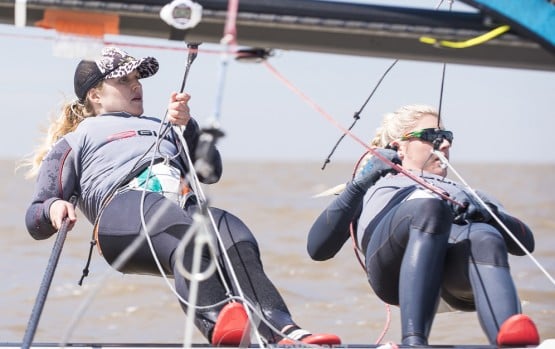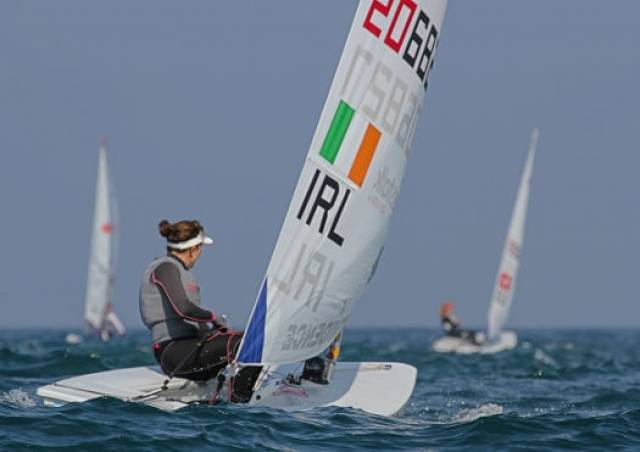The 32–month long Olympic sailing qualification process, incorporating events ranging from Takapuna to Toronto, has concluded with 380 athletes sailing 274 boats that will represent 66 nations in Rio de Janeiro this August.
One nation per event
This process, devised by World Sailing in consultation with the International Olympic Committee (IOC), prioritises performance with later places allocated in accordance with the IOC's principle of universality. With only one nation permitted per event, it can be argued that the process does not allow the Olympics to showcase all the world's best sailors, but the alternative is to have the fleet filled with the top sailors from a smaller number of countries, opening the possibility of a clean sweep of medals by one nation. The Finn, for example, has been a happy hunting ground for British sailors three of whom have won seven out of the last ten Finn Gold Cups. It is not inconceivable that, were multiple entries from a single nation allowed, then GBR could own the podium in this class at least.
Ireland qualifies three at first opportunity
The first qualifying opportunity was at the combined World Championships in Santander in September 2014 where half of the places available for Rio were secured. Ireland's sailors were successful in achieving qualification in the One-person Dinghy Men and Women and the Skiff Men events in Santander.
 Andrea Brewster and Saskia Tidey confirmed for Rio next month Photo: B Gretz
Andrea Brewster and Saskia Tidey confirmed for Rio next month Photo: B Gretz
Ireland gets African slot
Remaining performance places were allocated to the 2015 Class World Championships and a series of Continental Qualification Events sanctioned by World Sailing, to finish by 1 June 2016 at the latest. Brazil, as host country, get an automatic entry in each event, while 4 places, 2 each in the Laser and Laser Radial classes are reserved for allocation by IOC to smaller nations. The Irish 49erFx qualified through the 2015 Worlds when the place reserved for Africa was not used, thus increasing the original number of places available from the Worlds.
Quality or Quantity? - Some countries reject their places
Things got even more complicated this year as seven countries (Australia, Austria, Canada, Croatia, Germany, New Zealand and Sweden) have decided not to send sailors in qualified classes, thus opening the door for countries lower down the pecking order. In at least three of these countries appeals against these decisions were dismissed by higher authorities. But social media continues the debate and it is sure to be a topic for some time to come.
Lynch overturns Espey, Murphy stays on course
Ireland, in common with many countries, put in place an additional selection system to determine the individuals that would be chosen for Rio. Finn Lynch defeated James Espey in the Laser class to secure selection, while Annalise Murphy held off the challenge of Aoife Hopkins in the Laser Radial. There were no challengers to the Skiff teams of Seaton/McGovern and Brewster/Tidey so these pairs travel to Rio.
Events & Equipment
While sailors traditionally refer to the class of boats they sail, IOC/World Sailing first define events, then equipment as per the following table:
| Event | Equipment | Total Places | 2014 WC | 2015WC | Continental Places | ||
| Men | Women | Mixed | Fleet M/W | ||||
| Windsurfer | RS:X | RS:X | 36/26 | 18/13 | 6/6 | 11/6 | |
| One-person dinghy | Laser | Laser Radial | 46/37 | 23/19 | 9/4 | 11/11 | |
| Heavyweight one-person dinghy | Finn | 23 | 12 | 4 | 6 | ||
| Two-person Dinghy | 470 | 470 | 26/20 | 13/10 | 6/3 | 6/6 | |
| Skiff | 49er | 49erFX | 20/20 | 10/10 | 3/3 | 6/6 | |
| Multihull | Nacra 17 | 20 | 10 | 3 | 6 |
Next: In the next article we take a look at the format of the Olympic Regatta.































































